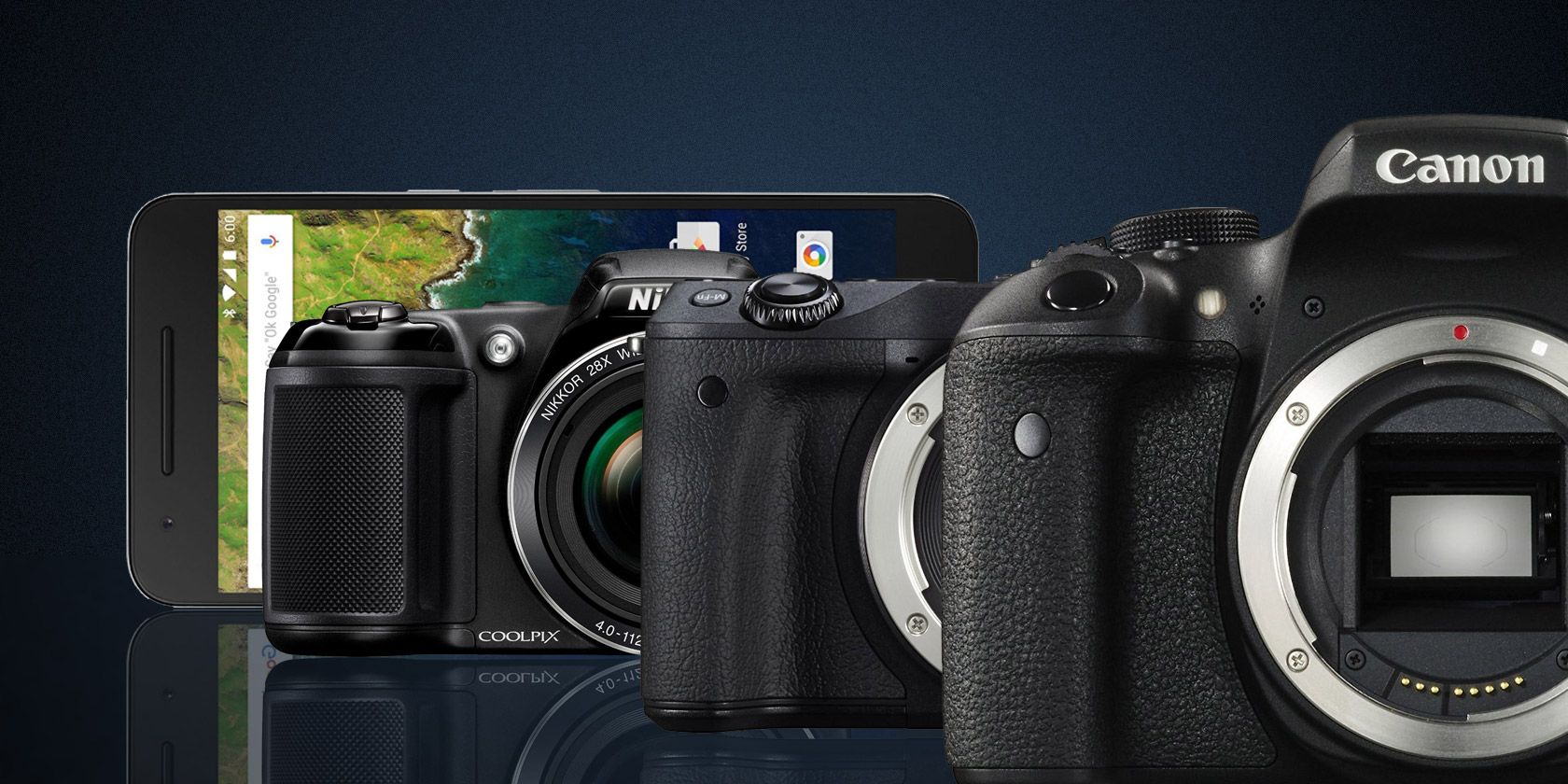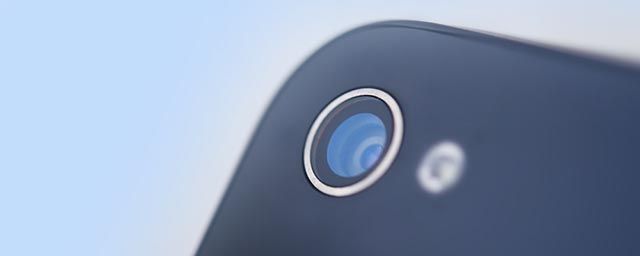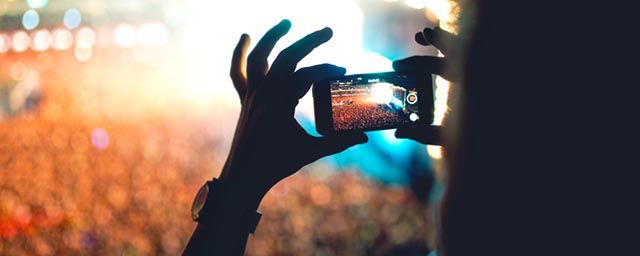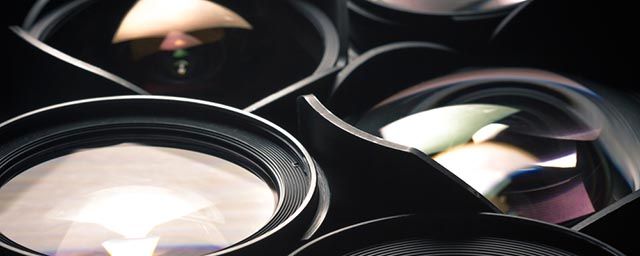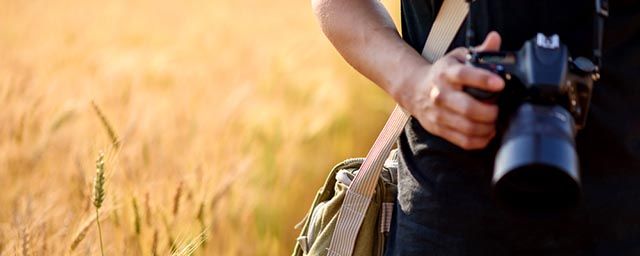Some people say you can't take good pictures without a DSLR camera. They're absolutely, unequivocally wrong. To say that everyone needs a DSLR is like saying everyone needs a gaming PC, everyone needs a Macbook Pro, or everyone needs a muscle car. It's simply untrue and disingenuous.
The truth is that way too many people waste money on DSLRs that they'll never fully take advantage of. If the only reason why you're buying one is because someone told you to, take a step back and reconsider. Maybe you do need one, but chances are you don't.
But with so many camera types available today, it can be tough knowing which one is the right one for you. Fear not, however, because we're here to help you make that decision with as little stress and confusion as possible.
Smartphone Cameras
Photography has never been as prolific as it is today, and we can thank whoever decided to equip mobile phones with cameras for that. A lot of photographers look down on smartphone cameras, but here's the reality: smartphone cameras are deceptively good, especially for beginners.
The Pros
The absolute best thing about smartphone cameras is that we already carry our smartphones with us everywhere we go -- and that means we always have a camera to use. Don't underestimate this! A $3,000 DSLR is useless if you don't have it on you when you need to take a picture.
And because we already know how to operate our smartphones, the learning curve for operating a smartphone camera is incredible shallow. This is partly due to the fact that smartphone cameras are somewhat gutted in features, but still, an easy learning curve is something to be cherished in photography.
The maximum potential of a smartphone may fall way short of the maximum potential of a decked-out DSLR, but modern smartphone cameras aren't bad by any means. In fact, they're quite advanced, plus you don't need great image quality for things like learning how to compose a photograph.
Lastly, smartphones are surprisingly flexible thanks to apps and accessories. The Creative Cloud apps are a good example of software-side effects, while smartphone lens attachments show how much you can do through accessories alone. Not to mention how easy it is to share and upload photos right from your device.
So if you have a good smartphone camera and you're happy with it, you probably don't need a DSLR. However, if you reach a point where your smartphone simply can't produce the images you want, then it may be time to upgrade.
The Cons
All of the above being said, don't deceive yourself into thinking that a smartphone is a valid replacement for a DSLR. That's not what we're trying to say, as it's undeniable that smartphone cameras have many flaws.
The lack of an interchangeable lens system is a big one. Yes, there are lens attachments that can do things like fisheye distortion, but you'll never see a 400mm high-powered zoom attachment with optical stability.
Smartphones also don't have hot shoe mounts. These mounts are mainly used for external flash units, but also for electronic viewfinders and shotgun microphones. This means if you need a flash, you're stuck using the built-in one, and that's the worst way to use a flash in photography.
And for most people, taking pictures with a smartphone is awkward at best. They're great for selfies and candid shots, but if you want to do anything more serious than that, smartphones are bottom of the barrel (even with grip attachments that are meant to alleviate this issue).
So while you can definitely take excellent photos with a smartphone, and while you can certainly make money with smartphone photography, you really shouldn't rely on a smartphone for anything more than casual or hobbyist photos. Trying to "go pro" with a smartphone camera is just asking for headaches and disappointment.
Point-and-Shoot Cameras
The term "point and shoot" camera doesn't have a strict definition, and sometimes people use it to refer to different things, so here's how we're using it: a compact camera that doesn't have an interchangeable lens system or a manual operation mode.
The Pros
Point-and-shoot cameras have one huge point in their favor: an easy learning curve. They're designed for people who have little or no photography experience, and so the camera tries to automate as many aspects as it can so the shooter doesn't have to worry about anything.
Their compact size is also great for portability. Not as portable as smartphones, of course, but still small enough that they can be tucked away inside pockets and purses. Again, this is a big deal because a camera is only useful if you have it on you when you actually need it.
Most point-and-shoots have fixed apertures, but some of the more advanced models come with extra features like variable apertures, digital superzooms, cutting-edge autofocus, and special flash units. However, if you really need these, a DSLR might be a better choice.
Lastly, price. Point-and-shoots are pretty much as cheap as you can go without dipping into disposable territory. You can get a feature-packed model for under $150, and even if you aim for something more advanced, you probably won't be spending more than $300. In the world of cameras, that's dirt cheap.
The Cons
Because they're designed for people who don't care to study photography, point-and-shoots don't leave much room for growth. If you like automatic mode, that's fine, but if you want to take control of your shots, a point-and-shoot will feel quite limited.
For example, the fixed lens is a big restriction. One thing that makes photography really fun is the ability to play around with all kinds of different lenses: wide angle, telephoto, macro, etc. Each lens produces a unique image, and you can't get that kind of variety with the average point-and-shoot.
The images produced by a point-and-shoot are often worse than equivalent images produced by mirrorless and DSLR cameras because point-and-shoots have inferior sensors. An inferior sensor means less sensitivity to light, and that means less clarity and more noise.
Also, point-and-shoots don't feel as good in your hands. They're usually made from cheaper materials and they look like something only an amateur would use. Maybe you don't care about these things, which is great if you don't, but they can be enthusiasm killers for some people.
Mirrorless Cameras
Newbies often cock their heads when they first hear about mirrorless cameras -- "Wait, cameras have mirrors?!" -- but don't let the name perplex you. Just think of them as compact DSLRs. (Obviously it's not that simple, but it's accurate enough as a generalization.)
The Pros
Mirrorless cameras do away with the mirrors inside DSLRs that allow photographers to look through the viewfinder and see what the lens sees. Since this mirror is the main reason why DSLR bodies are so bulky, mirrorless cameras can be made much smaller.
And because the mirrors are gone, so too are the viewfinders. Instead, mirrorless cameras display what they "see" in real-time using an LCD screen on the back of the body -- and unlike with a viewfinder, the LCD screen shows what the final image will actually look like.
Like DSLRs, mirrorless cameras have an interchangeable lens system that lets you snap-on and snap-off different lenses. Depending on the brand and model, you may even be able to use the same exact lenses between a mirrorless and a DSLR. (Or you may need an adapter, as is the case for the Canon EOS M3).
Unlike point-and-shoots, mirrorless cameras are meant for people who are more serious. You can still use auto mode, but you'll also get aperture-priority, shutter-priority, and manual modes for more control. They also have hotshoe mounts, which come in handy when you need speedlight flash units and other such accessories.
All in all, mirrorless cameras are kind of like a hybrid between DSLRs and point-and-shoots: compact and great for travel, yet advanced enough that you'll have a lot of room for creative expression and artistic freedom.
The Cons
While the compactness of a mirrorless camera is great for portability and travel, some photographers complain that they're actually too small and don't fit comfortably in the hand. It really depends on how big your own hands are, but it's something to keep in mind.
The image quality of a mirrorless camera is slightly worse than what you'd get with an equivalent DSLR. Autofocus is also noticeably slower than on a DSLR, which can be immensely frustrating when you want to take a lot of photos.
There are other points to consider, such as the aforementioned possible need for a lens mount adapter. Battery life on a mirrorless is also far worse than a DSLR due to the always-on LCD screen. One charge may last you a few hundred shots rather than a few thousand.
As far as price, mirrorless cameras bridge the gap between point-and-shoots and DSLRs (as you might've already guessed), placing them on par with entry-level DSLR cameras. Look to spend anywhere from $300 (as for this Olympus PEN E-PL6) up to $550 (as for this Sony Alpha a6000). More if you include kit lenses.
And if you care about how the camera feels in your hand, just know that a mirrorless feels more like a point-and-shoot than it does a DSLR -- or in other words, it doesn't feel very "professional" even though you can certainly take professional-quality photos with one.
DSLR Cameras
You'll need a DSLR if you want people to think you're a professional. There's something inherently impressive about these chunky cameras, and even though they are quite powerful, they also have a few drawbacks that may dissuade you from purchasing one.
The Pros
Among all digital camera options, DSLRs offer the best image quality bar none. They're available in cropped-frame and full-frame sensors, but regardless of which one you have, the results will typically be sharper and have better contrast than what you get with non-DSLR cameras.
Like mirrorless cameras, DSLRs have an interchangeable lens system, but because DSLRs have been around much longer than mirrorless cameras, they have a wider variety of lenses available. (You can adapt a DSLR lens onto a mirrorless body, but you may lose image quality.)
DSLRs also have the fastest autofocus mechanisms of digital cameras today. For motion-sensitive photography -- such as sports or wildlife -- this is an indispensable benefit. We're talking about the difference between a few seconds vs. a fraction of one second to focus, and that could be all that matters.
What's nice about DSLRs is that there aren't any bad ones on the market. You might buy one with features you don't need, or you might buy one that lacks a specific feature, but it's pretty much impossible to buy one that flat-out sucks. In that sense, DSLRs are a safe buy.
Plus, DSLRs are slow to depreciate in value because they hold up well even after years of use. This means that DSLRs are "buy it for life" purchases, and if you decide that you don't want it anymore, you can resell it without losing much money (which is one way you can save money when buying DSLRs).
Higher-end DSLRs are also great if you ever intend to record and produce quality videos, such as for short films or a YouTube channel.
The Cons
The biggest issue with DSLRs is that they have a lot of technical complexity, and that translates into a steep learning curve. With so many buttons and menus and features, it's easy to become overwhelmed. That's one reason why so many newbie photographers quit soon after they start.
Another big issue is the size and weight of most DSLRs: they're big and bulky. Even if you get yourself a nice camera bag, it can be a pain having to carry your gear around everywhere you go. (Not just the camera, but also alternate lenses, battery packs, flash units, cables, etc.)
And don't forget that DSLRs are one of the most frequently stolen devices on the planet. Sure, it's fun to walk around the city and take wild and crazy photos, but if you let your guard down for one second, you might find that someone has stolen thousands of dollars of your gear.
Which highlights yet another drawback to DSLRs: they're freaking expensive. A good DSLR body on its own can cost anywhere from $500 (as for this Nikon D5200) up to several thousand dollars (as for this Nikon D4s). Lenses can cost anywhere from $100 to several thousand dollars as well.
Lastly, DSLRs require proper maintenance if you want them to last. The constant changing of lenses makes them prone to dust, dirt, and even mold, so you'll have to clean them regularly. Also, don't forget about proper battery management in DSLRs.
Which Camera Is Right for You?
Hopefully we've helped clear up the differences between the various kinds of digital cameras. Want to take pictures everywhere you go but only for fun? Stick with your smartphone or point-and-shoot. The others may just frustrate you.
On the other hand, if you want to pursue professional photography as a career, then you should really invest in a proper DSLR (and maybe keep a mirrorless on hand as a portable backup). Just make sure you know the risks of a photography business before you quit your day job!
One final note: a photographer's skill is not determined by his or her gear! No matter what camera you have, keep doing exercises to sharpen your skills. For free knowledge, check out these YouTube channels for photographers. If you're willing to pay, check out these awesome Lynda.com courses for photographers.
So, what kind of camera is right for you? Which camera is currently your favorite? Got any gear advice for newbies and hobbyists? Share with us in the comments below!
Image Credits: Smartphone Close-Up by welcomia via Shutterstock, Smartphone Concert by bogdanhoda via Shutterstock, DSLR Lenses by Petr Svoboda via Shutterstock, DSLR Traveler by jaboo2foto via Shutterstock

